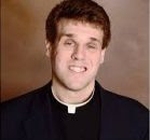
 Jonathan Turley – Rev. Travis Clark, 37, has been arrested with two women, Mindy Dixon, 41, and Melissa Cheng, 23, after an alleged sex act on the altar of his church.
Jonathan Turley – Rev. Travis Clark, 37, has been arrested with two women, Mindy Dixon, 41, and Melissa Cheng, 23, after an alleged sex act on the altar of his church.
New Orleans Archbishop Gregory Aymond said that the tryst at Saints Peter and Paul Roman Catholic Church was “demonic” and has ordered the altar removed and burned. If true, this was an act of utter depravity and a terrible desecration of this church, but the prosecution could raise some challenging issues under the Constitution.
Police report that a witness was surprised to see the light on in the church and went to investigate. The police were called when Clark was seen through a window at the altar. He was partially undressed in his priestly attire and allegedly engaged in a sexual tryst with two high-heeled, corseted women.
The three were charged with obscenity charges for having sex within the view of the public. That charge could raise some interesting legal issues and a viable (if novel) criminal defense.
We have often discussed the controversy over obscenity standards, including a recent charge against the producers of the movie “Cuties.”
In this case, the charge may hinge on the question of whether the sexual encounter could be seen from a public space. Under the Louisiana criminal code, the operative language is found in Section 106:
§106. Obscenity
A. The crime of obscenity is the intentional:
(1) Exposure of the genitals, pubic hair, anus, vulva, or female breast nipples in any public place or place open to the public view, or in any prison or jail, with the intent of arousing sexual desire or which appeals to prurient interest or is patently offensive.
(2)(a) Participation or engagement in, or management, operation, production, presentation, performance, promotion, exhibition, advertisement, sponsorship, electronic communication, or display of, hard core sexual conduct when the trier of fact determines that the average person applying contemporary community standards would find that the conduct, taken as a whole, appeals to the prurient interest; and the hard core sexual conduct, as specifically defined herein, is presented in a patently offensive way; and the conduct taken as a whole lacks serious literary, artistic, political, or scientific value.
The code does have an exception for “churches” and other organizations but only for “persons acting in their capacity as employees or agents of such organizations.” I think we can agree that, in a church that adheres to a strict celibacy rule for priests, this is outside of the scope of employment.
Adding to the bizarre elements of the case is a report that Dixon, who is also an adult film actress, posted on social media that she was traveling to the New Orleans area to meet up with another dominatrix to “defile a house of God.” The women reportedly told the police they were at the church to film “roleplay” with the priest. It is not clear if an actual film was created.
All of this creates a legal quagmire. There is no question that filming a porn film at the church would violate Clark’s agreement with the church and possibly constitute trespass or other collateral minor offenses. He could also be sued for the cost of removing, burning, and replacing the altar. Yet, filming pornography is not considered prostitution and is a lawful act (unless found in violation of another law like criminal obscenity).
The question is whether this is “in any public place or place open to the public view.” This is where my criminal defense background takes hold. There is an argument that this is neither a public place nor open to public view. The church was closed and thus not a “public” space at that time. When locked, it becomes private space under the control of the priests and staff.
Moreover, it is not clear what could be seen from public areas. In order to see into the church, the witness presumably had to go on church land. I have looked at the church property and there appears access from the sidewalk but it is not clear which window the witness used to look into the church. One article does show some windows close to the altar. If the court declares that the statutorily elements of exposure must be satisfied from a public location like the sidewalk, it may be difficult to establish those elements.
The question is how to distinguish this other cases. If this were not a House of God, but an actual home, we would not be discussing the possibility of a crime. Even if a house is near the sidewalk, entering the property to look into a window would be trespass. The area outside of a home is often called the curtilage and is afforded protection of privacy as well as constitutional protections under the Fourth Amendment in cases of police surveillance.
We have previously discussed some cases where people expose themselves inside of a home in plain view of the street, including a man arrested for making coffee at home in the nude. However, in this case, the scene was clearly not visible from the street and it is not clear what could be seen from the window since the altar is at the end of the Nave and beyond to the back of the Bema. It was the light that drew the witness to look into the window, not the scene itself.
Defense counsel could also challenge whether specific acts that were witnessed and whether any of the statutorily defined areas were exposed.
One would expect that Clark’s priestly career is over. Indeed, if this was a filmmaking enterprise, he presumably intended to leave the service of the Church since the altar and his participation would have been likely discovered. However, he may have a chance to defeat the criminal charge in what could be one of the most unique criminal defenses in history.
SF Source Jonathan Turley Oct 2020
